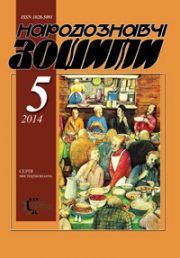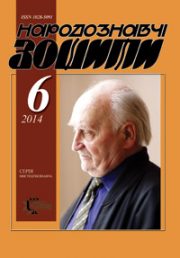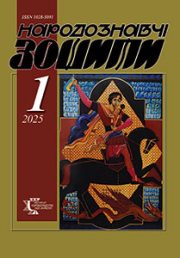The Ethnology Notebooks. 2022. № 3 (165), 615—621
UDK 94(477.85):94(478)]”1573″
DOI https://doi.org/10.15407/nz2022.03.615
KHOTYN VOLOST DURING THE STRUGGLE FOR THE MOLDAVIAN THRONE IN 1572
BALUKH Oleksii
- ORCID: https://orcid.org/0000—0001—8091—8118
- PhD in History, Assistant Professor,
- Department of History of Ukraine,
- Faculty of History, Political Science
- and International Relations,
- Chernivtsi Y. Fed’kovych National University,
- 2, Kotsyubynsky Str., Chernivtsi, 58012, Ukraine,
- Contacts: e-mail: a.balukh@chnu.edu.ua
Abstract. The article analyzes the military and political situation in the North Moldavian lands (Khotyn volost) in the early 70’s of the XVIth century during the intensification of Ottoman expansion in Central and Eastern Europe. Bogdan IV was a proprietor of Moldavia from 1568 to 1572. He succeeded to the throne as son of the previous ruler, Alexandru Lгpușneanu.
The close political cooperation between Poland and Bogdan led to his dethronement by Sultan Selim II and the strain of Poland-Turkey relations. In the army of M. Meletsky were the Cossacks, which in 1572 helped the hospodar Bogdan IV to restore power over the state, which was captured by John III the Terrible. While still on the throne, Bohdan IV allowed the Poles to deploy his garrison and artillery in Khotyn, led by M. Dobrosolovsky.
The Khotyn Fortress was located on the shores of the Dniester River. After crossing the Dniester, M. Meletsky and his army passed through Bukovyna and arrived at the Prut River, from where he sent the chorunzhyy Bilavsky and Bogdan’s servants to Khotyn for cannons. However, M. Meletsky and Bohdan IV failed to break through to Iași (Jassy), which was the capital of Moldavia, and were forced to retreat to Khotyn, fighting off Turkish-Tatar and Moldavian troops.
The Polish-Cossack army encamped under the fortress, and the commanders were located in the castle.
The Turks tried to capture the camp, but the Poles and Cossacks managed to repel their attack. In the end, the Poles agreed with the Turks on a truce and the withdrawal of troops.
The crossing of Polish-Cossack troops across the Dniester was delayed for five days. Later, the master John III the Terrible with the help of the Turks tried to capture Khotyn Castle, but Polish troops stubbornly defended themselves for several months. In the end, John III agreed with the Polish government to take the oath of allegiance, which he did. Only after that the Polish troops leave the Khotyn Fortress.
Keywords: Khotyn volost, Moldavia, military-political relations, Poland, Ottoman Empire, John III the Terrible.
Received 6.04.2022
REFERENCES
- Bodnariuk, B. (2005). Ukrainian Cossacks: the problem of common origins and role in anti-Ottoman wars in the late XVI century. Green Bukovyna. Chernivtsi: Green Bukovyna, 1—2, 78—91 [in Ukrainian].
- Bodnariuk, B., & Fedoruk, A. (2001). Participation of Cossacks in the anti-Ottoman wars of the Danube principalities (last third of the 16th — beginning of the 17th century). Khotyn War. (Proceedings of the International Scientific Conference Dedicated to the 380th Anniversary of the Khotyn War). Chernivtsi [in Ukrainian].
- Iorga, N. (1970). History of the Romanian army. Bucharest: Editura Militara [in Romanian].
- Lepyavko, S. (1996). Cossack wars of the end of the XVI century in Ukraine. Chernihiv: Severyanska dumka [in Ukrainian].
- Stati, V. (2002). History of Moldova. Chisinau: Tipografia Centrala [in Russian].
- Masan, O., & Botushansky, V.M. (Ed.). (2009). Chernivtsi in the second half of the XIV—XVIII centuries (until 1775). In: Botushansky, V.M. Chernivtsi: History and modernity (Anniversary edition to the 600th anniversary of the first written mention of the city) (Pp. 23—75). Chernivtsi: Zelena Bukovyna [in Ukrainian].
- Szutkiewicz, B. (2009). Poland and Moldavia in 1551—1572. Historical Portfolios from Bialystok, 7, 11—24 [in Polish].
- Ogui, O. (2010). History of circulation of monetary units and denominations in Bukovyna. Moldavian period (Part 2: 1475—1585). Chernivtsi: Chernivtsi National University [in Ukrainian].
- Masan, O., & Botushansky, V.M. (Ed.). (2005). Bukovyna as an object of international relations from ancient times to 1774. In: Botushansky, V.M. Bukovyna in the context of European international relations (since ancient period till middle of the 20th century) (Pp. 9—168). Chernivtsi: Ruta [in Ukrainian].
- Bielski, M. (1856). Polish chronicle of Marcin Bielski (Vol. 2, pp. 701—1222). Sanok: Pollak Karol [in Polish].
- Gwagnin, A. (2009). Chronicle of European Sarmatia (2 ed.). Kyiv: Kyiv-Mohyla Academy Publishing House [in Ukrainian].
- Beczek, H. (2021). Polish activities aimed at restoring the royal throne to Bogdan Lapusneanu. Polish-Moldovan intercultural dialogue, 3, 144—159 (Vol. IV) Chisinau: Tipografia UST [in Polish].
- Lasicki, J., & Rogalski, L. (Ed.). (1861). About the entry of Poles to Wallachia with Hospodar Bogdan and the defeat of the Turks under hetmans Mikolai Mielecki and Mikolai Sieniawski, in 1573. In: Rogalski, L. The history of the Danubian principalities is: Multan and Wallachia according to the harnesses of Cogalniceana, Vaillanta, Ubiciniego and Palauzowa (Vol. 1, pp. 418—430). Warsaw: Published and printed by S. Orgelbrand [in Polish].
- Plewczynski, M. (2012). Wars and Polish military in the 16th century (Vol. II: 1548—1575). Zabrze; Tarnowskie Gory: Inforteditions [in Polish].
- Spieralski, Z. (2001). Moldavian Brawls. Balti: b. i. [in Russian].
- Milewski, D. (Ed.). (2011). Fight on the throne of Moldavia in 1572. From the history of Polish military. Old Polish era, times of partitions, the most recent times (Pp. 37—47). Krakow: Pijarow [in Polish].
- Rybakov, B.A. (Еd.). (1975). Complete Сollection of Russian Сhronicles (Vol. 32: Chronicles: Lithuanian and Zhmoitskaya, and Bykhovets). Moscow: Nauka [in Russian].
- Dobrzhansky, O., Makar, Yu., & Masan, O. (2002). Khotyn district: historical essay. Chernivtsi: Molodyi Bukovynets [in Ukrainian].
- Hashdeu, B. (1989). Ion-Voevoda the Terrible: Tale. Chisinau: Literature Artistice [in Russian].
- Petriceicu-Hajdeu, B. (Еd.). (1864). Historical Archive of Romania (Vol. I). Bucharest: Imprimeria statului [in Romanian].
- Zashkilnyak, L., & Krichun, M. (2002). History of Poland: from ancient times to the present day. Lviv: LNU named after I. Franko [in Ukrainian].
- Semenova, L. (2006). Principality of Wallachia and Moldavia. Late 14th — early 19th century (Essays on foreign policy history). Moscow: Indrik [in Russian].
- Ureche, G. (1990). The Chronicle of Moldavia (…) from Dragos-voivode to Aron-voivode. In: Ureche, G., Costin, M., & Neculce, I. The Chronicle of the Land of Moldova: Chronicles (Pp. 23—118.). Chisinau: Hyperion [in Romanian].
- Purich, Sh. (2000). Medieval city and townspeople in Moldavian chronicles (on the example of Khotyn). Medieval Europe: a view from the end of the 20th century. (Proceedings of the scientific conference). Chernivtsi [in Ukrainian].






